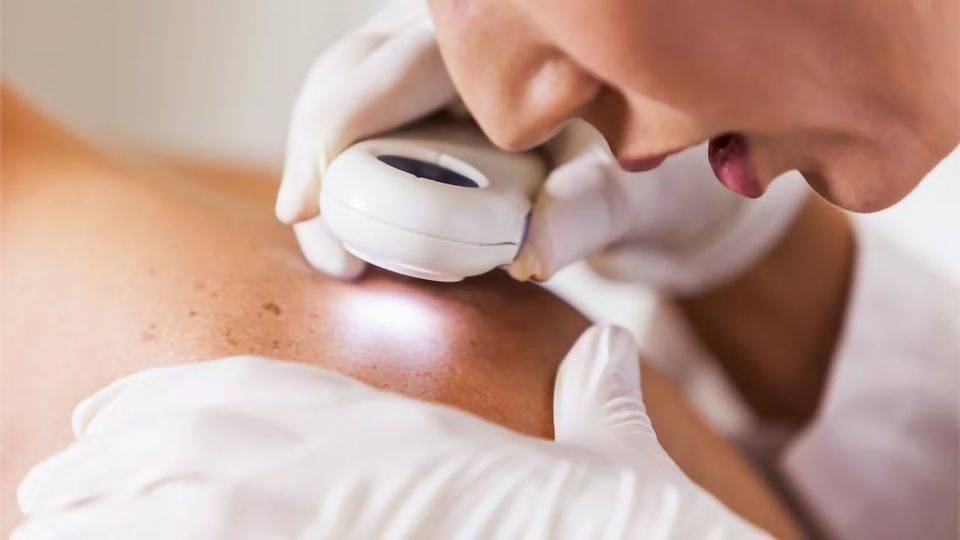Superficial Radiation Therapy: A Non-surgical Treatment for Non-melanoma Skin Cancers

Complete the form below to unlock access to ALL audio articles.
Skin cancer can be broadly split in to two types: melanoma and non-melanoma. The most common non-melanomas include basal cell carcinoma and squamous cell carcinoma, for which the main treatment is surgery. However, other non-surgical options are emerging, including superficial radiation therapy (SRT), a unique type of photon radiotherapy.
To learn more about SRT we recently spoke with Joe Sardano, CEO at Sensus Healthcare. Joe explains what SRT is, how it works, and the cancers it is particularly suited to treating.
Laura Lansdowne (LL): For our readers who haven’t heard of Sensus Healthcare before, could you tell us about the company’s history and mission?
Joe Sardano (JS): We initially wanted to begin a search for a technology that could majorly serve an underserved market in the global patient community. We discovered the skin cancer market and were amazed at the services being rendered for such a large and growing population. We began to research its history to see if there was a technology that could serve as an equally effective, but non-invasive solution to surgery, which is the standard of care.
After two years of an all-out blitz to learn everything that we could about the market and find a disruptive technology that would provide results, in 2010 we founded Sensus with the superficial radiation therapy (SRT) technology. We continue to grow the market with this non-invasive alternative treatment option for patients with pre-existing conditions and see the acceptance of this treatment choice by physicians and patients alike.
Now, we continue to serve this very large and growing dermatology market with newer technologies. Most recently, we expanded into the broad oncology space with an innovative new technology for intraoperative radiation therapy (IORT) called Sculptura. Our objective all along has been to bring to market more cost-effective technologies that will reduce overall healthcare costs while, at the same time, delivering better outcomes for patients.
LL: What is superficial radiation technology (SRT), and how does it work as a treatment for cancer?
JS: Superficial radiation therapy, or SRT, is a type of photon radiotherapy that is very unique. It’s considered a tissue-preserving technology, as SRT only penetrates 5mm below the surface of the skin, making it perfect for skin cancer and keloids. SRT only affects the cancer cells, while allowing healthy cells to survive and rejuvenate themselves. Then it dissipates!
Other forms of radiation kill everything in their path – and travel through the body while doing so. With SRT, there is no radiation scatter due to the exclusive and unique applicators that we provide to doctors. These applicators are various sizes, allowing different lesions and keloids to be treated anywhere on the body, no matter how big or small.
LL: Could you tell us more about the types of cancer SRT is particularly suited to treating?
JS: Sensus has FDA clearance to treat basal cell carcinoma (BCC) and squamous cell carcinoma (SCC) (non-melanoma skin cancers). More than 5.4 million cases of non-melanoma skin cancer were treated in over 3.3 million people in the U.S. in 2012, the most recent year new statistics were available. The diagnosis and treatment of nonmelanoma skin cancers in the U.S. increased by 77 percent between 1994 and 2014.
Most dermatologists will tell you that there are millions more people who may be walking around with skin cancers that they do not know about, simply because they fail to visit a dermatologist for an annual body check. So, we encourage everyone over the age of 65 years to make an appointment with a dermatologist. As the remaining 2 percent of skin cancers are melanoma, which is a killer, we must prevent the progression of skin cancer to melanoma with these annual body checks.
LL: What are the benefits of using SRT compared to alternative cancer treatments?
JS: SRT is a perfect complement to Mohs surgery, which is considered the current gold standard for skin cancer treatment. By working closely with Mohs surgeons, we have learned that not everyone is an ideal candidate for surgery. In fact, with most patients being over the age of 65 years, this growing population is living longer, and many of these patients have pre-existing conditions like diabetes and/or take heart medication.
Diabetes increases the chances of infection, while beta blockers or blood thinners allow excessive bleeding to affect the healing process for older patients. We also learned that skin cancer lesions on the shin or scalp, close to the bone, have a more difficult time adhering to stitching. These pre-existing conditions provide SRT with a strong patient population to work with. Most recently, our doctor partners are more frequently being faced with “surgically fatigued” patients who may have experienced Mohs surgery in the past and, now that they have a non-invasive alternative, prefer that choice instead.
Our strong recommendation, for skin cancer patients especially, is to search out a Mohs surgeon who can also provide you with the choice of SRT. Many of these doctors believe in offering a “total solutions” approach to treating their patients; they want to give patients as many options as possible to best meet the needs of their unique health situations. As we know in today’s healthcare environment, there are many choices available to us as healthcare consumers. We must be aware of our choices and choose what we think is best for our individual needs.
Concerned doctors think of it in the same way. They ask: “How can I best serve my patients’ needs?” Half the tools sometimes work for less than half of the patients. Having access to all the tools, though, will always serve patients best.
Joe Sardano, was speaking to Laura Elizabeth Lansdowne, Science Writer for Technology Networks.




